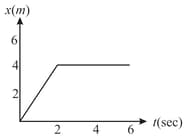BM Sharma Solutions for Chapter: Newton's Laws of Motion I, Exercise 1: DPP
BM Sharma Physics Solutions for Exercise - BM Sharma Solutions for Chapter: Newton's Laws of Motion I, Exercise 1: DPP
Attempt the free practice questions on Chapter 6: Newton's Laws of Motion I, Exercise 1: DPP with hints and solutions to strengthen your understanding. Chapterwise/Topicwise Daily Practice Problems (DPP) Mechanics I JEE Main & Advanced solutions are prepared by Experienced Embibe Experts.
Questions from BM Sharma Solutions for Chapter: Newton's Laws of Motion I, Exercise 1: DPP with Hints & Solutions
A mass of is suspended by a string . Another string is connected to its lower end (see figure). If the string is stretched slowly, then

A machine gun is mounted on a car on a horizontal frictionless surface. At some instant, the gun fires bullets of mass with a velocity of with respect to the car. The number of bullets fired per second is . The average thrust on the system is
A machine gun fires a bullet of mass with a velocity of . The man holding it can exert a maximum force of on the gun. How many bullets can he fire per second at the most?
In the figure below, given is the position-time graph of a particle of mass . The impulse at is

A body of mass has an initial velocity of along , and it is subjected to a constant force of in a direction perpendicular to . The distance of the body from after will be
A particle moves in the plane under the action of a force , such that the components of its linear momentum at any time are and . The angle between and at a time is
The motion of a particle of mass is given by for , for and for . Which of the following statements are true?
Two billiard balls and , each of mass are moving in the opposite directions with a speed of . Each ball collides and rebounds at the same speed. If the collision lasts for , which of the following statements are true?
